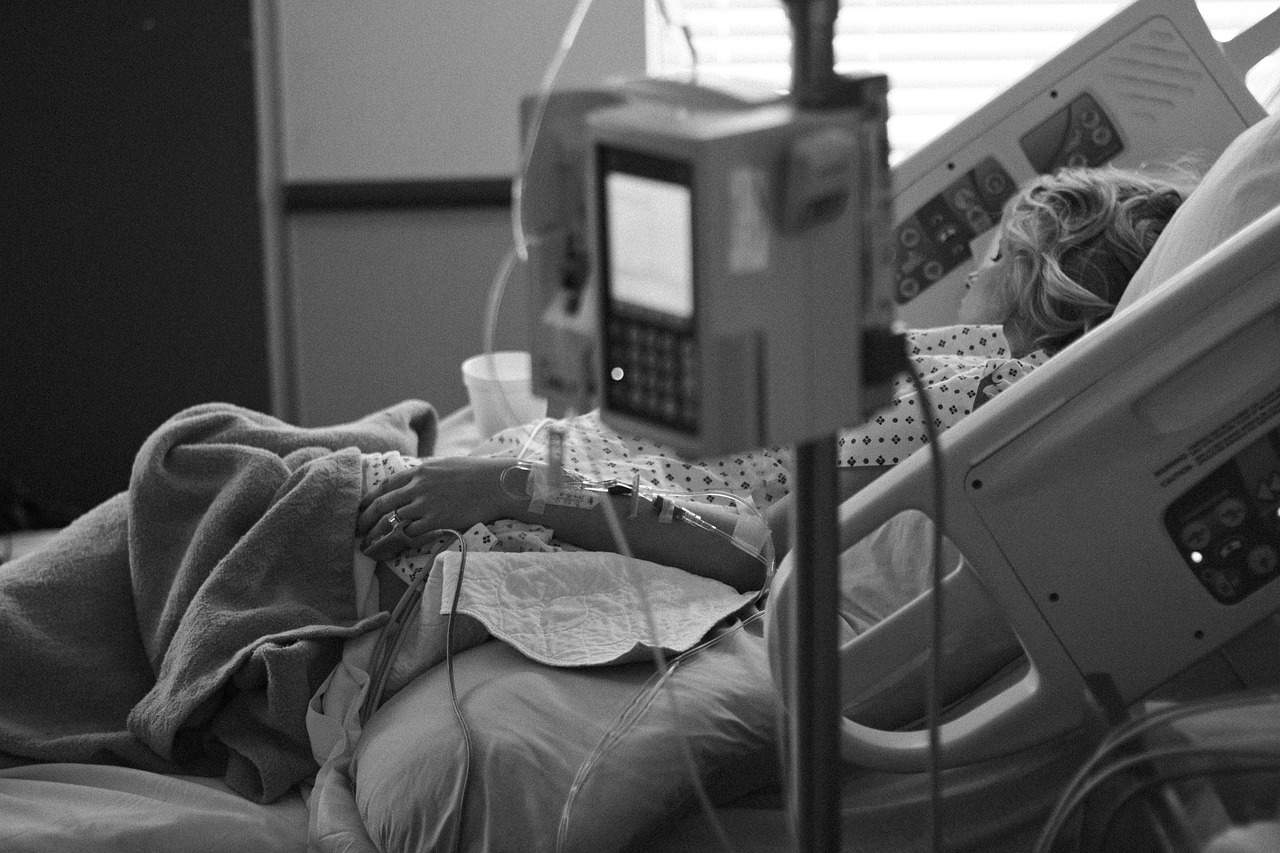Prayer as the unveiling of the heart
“Hi, I’m Chaplain James. Is there a way I can support you this morning?”
The man had asked his nurse to page a chaplain, so I suspected that his looming surgery was weighing heavily on his heart, but I wanted to hear the request directly from him. The man shifted his weight into a more comfortable position on the gurney and raised his eyes to the ceiling in a pensive silence.
“Could you please pray for wisdom for the care team?” he asked, adjusting his shoulders slightly. I nodded but said nothing, giving the man the space to gather his thoughts and elaborate. “And, above all, whatever the outcome, that God’s will be done.”
“I’d be happy to,” I replied. “Let’s pray.”
I invited the man to take a couple of deep breaths before I began to speak. As I prayed, his face relaxed, his shoulders softened, his pulse slowed, and his breathing became deep and unlabored. I could see the man returning to a sacred, unchangeable depth deep within his soul, a place of comfort and strength that would remain undisturbed regardless of the outcome of his operation. I concluded, and his eyes opened. Smiling softly, he thanked me and breathed a sigh of relief as the nurse wheeled him off for his open-heart surgery.
This was my first chaplain visit at my Clinical Pastoral Education (CPE) program at UC Davis Medical Center in Sacramento, California. Countless others followed in the days ahead as I responded to chaplaincy requests throughout the 14-story hospital building.
Although it falls outside the purview of doctors’ and nurses’ expertise, access to prayer is not some parallel, superfluous distraction from the “real” medicine practiced by the medical team. In addition to documented medical benefits, prayer provides a window into a patient’s most sincere medical wishes.
Like uncovering a bandage, prayer reveals the soul, that sacred core that somehow integrates and binds together the human person in all their complexity. A prayer, in the original Greek sense of the word for truth —alítheia— unveils the genuine interest of the patient and their family, blissfully free of triangulation and posturing. Such outpourings of the human heart offer critical insights into the patients’ real wishes and can help everyone involved see the best path forward. This is especially true in palliative care, where the line between prolonging life and extending the dying process can become blurred.
Traversing the jagged face of grief
While catching up on charting in the emergency department, I received a page from the crisis response team requesting my assistance with an automobile accident case. Despite the first responder’s best efforts, the patient, a young adult male, had died in the ambulance. The deceased young man’s family had been called to the hospital so that the news of his death could be delivered in person.
I immediately reported to the hospital’s interfaith chapel, where we worked to prepare the space for the bereavement meeting. Just as a social worker and I had finished arranging the chairs, the father of the deceased patient walked through the door. I invited him to take a seat and sat by his side as the medical team broke the news. The man sank into his chair and wept bitterly.
Grief is the price we pay for love. And when that grief strikes, it can’t be reasoned or life-hacked away. Chaplains accompany people in the throes of grief, sharing their sorrow and, in time, gesturing to a path that leads through the pain. The chaplain matches the pace of those they meet as they mourn, neither running ahead nor lagging behind as they travel on their via dolorosa. My journey with that heartbroken father in the interfaith chapel commenced with a silent supportive presence and an empathetic ear as he bewailed his son’s sudden passing. Then, I accompanied him as he viewed his son’s body. Finally —as the father’s shock subsided— we prayed for the courage and strength to release his son into God’s loving arms.
As I walked the man to his car, he remarked, “The Lord gave him to me, and now He took him back. I guess it was his time.” His cross of grief had not been removed, but rather had been changed and adjusted, laid upon his shoulders in a manner that he could now carry along the path before him.
A grateful weariness
Providing soul care to people awash in physical, moral, or existential pain can be intensely fatiguing; it demands a depth of attention and focus that is difficult to understand if you haven’t experienced it firsthand. Compassion means to suffer with, and ministering to someone as they suffer can be acutely distressing.
Moreover, an initial spiritual care assessment sends the head spinning in a wash of questions: What is this patient saying, and what are they implying with those words? What clues can I glean from the patients’ body language to assess what might be helpful at this moment? How can I offer pastoral support that isn’t brusque or heavy-handed? What are some graceful ways to enter a spiritual conversation, shift gears when necessary, and tactfully conclude? What chaplain interventions could restore this patient’s equilibrium? A dizzying constellation of thoughts and emotions converge in a clinical pastoral visit.
That intense interpersonal fatigue was most acute during the third week of my summer chaplaincy internship. On nights and weekends, the spiritual care team shrinks from ten full-time chaplains to one on-call chaplain, setting up a potentially relentless gauntlet of pastoral visits. This weekend was one such occasion. I was the sole chaplain available for two 24-hour shifts over a three-day Juneteenth weekend.
I did my best to respond to the incessant ringing of the on-call pager, which summoned me to what seemed like every nook and cranny of the 650-bed Trauma I hospital. I provided a reassuring presence for a father during his wife’s emergency c-section, abandoned a half-finished lunch to respond to a code blue (a patient in unexpected cardiac or respiratory arrest), and prayed with a young couple in the pediatric ICU whose daughter had drowned—doing all in my power to compartmentalize each encounter so that the emotional intensity did not derail my next chaplain visit.
Following an especially distressing late-night call during the second 24-hour shift, I sat in the empty chapel and prayed the night prayers I had learned as a Jesuit novice. The novitiate had taught me how to sink into a depth of spiritual consolation —“deep sea diving,” one Jesuit formator called it— a place that remains calm even when a storm is howling across the water’s surface. Slowly and reverently repeating well-worn, memorized prayers allowed me to regain my spiritual center and get some fitful rest in our designated sleep room beneath the emergency department.
It was short-lived. A few hours later, I was called to labor and delivery and, with the last reserves of my spiritual energy, comforted a couple whose baby had died. When my shift finally ended at 8 A.M., and it was time for the next intern to serve as the hospital’s sole on-call chaplain, I biked back to the Sacramento Jesuit Community in a daze and was asleep as soon as my head hit the pillow.
Healing the Beleaguered Self
“Love may be the greatest of the theological virtues,” —a wise Jesuit once told me— “but hope is the true virtue of adulthood.” A sound, rooted hope is a lifeline in times of sickness and distress. Unfortunately, prolonged illnesses and extended hospital stays often form a crucible of despair that boils off the reserves of hope just when it is needed most. As a result, many patients show signs of what Pope Francis calls “the beleaguered self,” a state of distress and despair that is as much spiritual as physical.
Chaplains can restore genuine hope by helping others recall their truest, most authentic selves. Good spiritual care strips away caveats and qualifiers; it invites us to be “more noun, less adjective,” as Pope Francis puts it in Let Us Dream. In doing so, patients gain a more serene and unencumbered outlook as they face their limitations and frailty. In calling patients back to what is essential, chaplains lead patients to a river of hope whose headwaters lie beyond the reach of white-knuckled willpower and whose gentle currents will carry them safely home.
A good summary of Ignatian spirituality is “in all things, to love and to serve.” That continues to be my theological north star throughout my Jesuit formation. For years, I have asked myself at day’s end, “Was I loving? Was I of service to others?” While the questions remain the same, my assessment of what merits a “yes” response has broadened since I entered the novitiate.
After serving as a chaplain, I have a deeper appreciation of the value of providing empathetic listening for a grieving mother, sharing a familiar prayer with a patient preparing for an operation, or engaging in a life review with a family preparing to extubate their father. By responding to suffering in this way, I have found a wonderfully human dimension of healthcare that I had naively undervalued. I discovered that a chaplain —full stop: all noun, no adjective— is an agent of God’s healing grace and hope during life’s most beleaguering hours.


